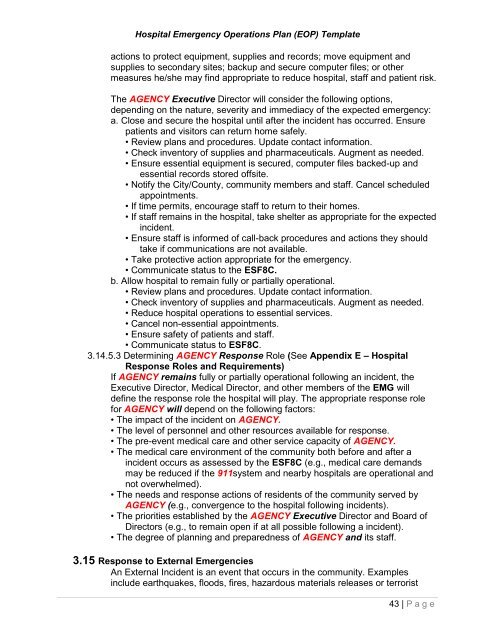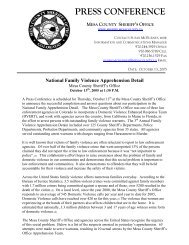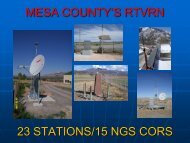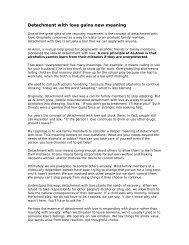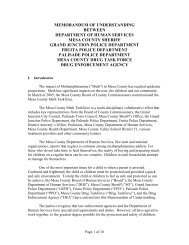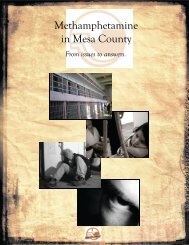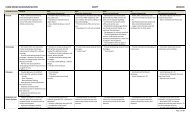Hospital Emergency Operations Plan (EOP) TEMPLATE
Hospital Emergency Operations Plan (EOP) TEMPLATE
Hospital Emergency Operations Plan (EOP) TEMPLATE
You also want an ePaper? Increase the reach of your titles
YUMPU automatically turns print PDFs into web optimized ePapers that Google loves.
<strong>Hospital</strong> <strong>Emergency</strong> <strong>Operations</strong> <strong>Plan</strong> (<strong>EOP</strong>) Template<br />
actions to protect equipment, supplies and records; move equipment and<br />
supplies to secondary sites; backup and secure computer files; or other<br />
measures he/she may find appropriate to reduce hospital, staff and patient risk.<br />
The AGENCY Executive Director will consider the following options,<br />
depending on the nature, severity and immediacy of the expected emergency:<br />
a. Close and secure the hospital until after the incident has occurred. Ensure<br />
patients and visitors can return home safely.<br />
• Review plans and procedures. Update contact information.<br />
• Check inventory of supplies and pharmaceuticals. Augment as needed.<br />
• Ensure essential equipment is secured, computer files backed-up and<br />
essential records stored offsite.<br />
• Notify the City/County, community members and staff. Cancel scheduled<br />
appointments.<br />
• If time permits, encourage staff to return to their homes.<br />
• If staff remains in the hospital, take shelter as appropriate for the expected<br />
incident.<br />
• Ensure staff is informed of call-back procedures and actions they should<br />
take if communications are not available.<br />
• Take protective action appropriate for the emergency.<br />
• Communicate status to the ESF8C.<br />
b. Allow hospital to remain fully or partially operational.<br />
• Review plans and procedures. Update contact information.<br />
• Check inventory of supplies and pharmaceuticals. Augment as needed.<br />
• Reduce hospital operations to essential services.<br />
• Cancel non-essential appointments.<br />
• Ensure safety of patients and staff.<br />
• Communicate status to ESF8C.<br />
3.14.5.3 Determining AGENCY Response Role (See Appendix E – <strong>Hospital</strong><br />
Response Roles and Requirements)<br />
If AGENCY remains fully or partially operational following an incident, the<br />
Executive Director, Medical Director, and other members of the EMG will<br />
define the response role the hospital will play. The appropriate response role<br />
for AGENCY will depend on the following factors:<br />
• The impact of the incident on AGENCY.<br />
• The level of personnel and other resources available for response.<br />
• The pre-event medical care and other service capacity of AGENCY.<br />
• The medical care environment of the community both before and after a<br />
incident occurs as assessed by the ESF8C (e.g., medical care demands<br />
may be reduced if the 911system and nearby hospitals are operational and<br />
not overwhelmed).<br />
• The needs and response actions of residents of the community served by<br />
AGENCY (e.g., convergence to the hospital following incidents).<br />
• The priorities established by the AGENCY Executive Director and Board of<br />
Directors (e.g., to remain open if at all possible following a incident).<br />
• The degree of planning and preparedness of AGENCY and its staff.<br />
3.15 Response to External Emergencies<br />
An External Incident is an event that occurs in the community. Examples<br />
include earthquakes, floods, fires, hazardous materials releases or terrorist<br />
43 | P a g e


